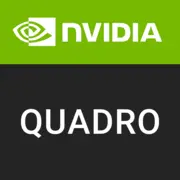NVIDIA Quadro NVS 440 PCIe x16

NVIDIA Quadro NVS 440 PCIe x16: Overview of an Obsolete Solution for Professional Tasks
Introduction
The NVIDIA Quadro NVS 440 PCIe x16, released in the late 2000s, was originally positioned as a solution for business environments and multi-monitor configurations. Despite its venerable age, this card still finds application in specific scenarios. In this article, we will explore its features, performance, and relevance in 2025.
1. Architecture and Key Features
Tesla (G84) Architecture: The Quadro NVS 440 is based on the Tesla architecture, which debuted in 2006. The G84 chip is manufactured using a 80nm process, which was progressive for its time.
Unique Features:
- Support for Multi-Monitor Configurations — up to 4 displays via DVI and DisplayPort interfaces.
- Optimization for 2D Tasks — rendering text, tables, and graphs.
Lack of Modern Technologies:
- RTX, DLSS, FidelityFX — not supported due to the age of the architecture.
- DirectX 10 — the maximum version of the API, limiting compatibility with modern applications.
2. Memory
Type and Size:
- GDDR3 — an outdated type of memory with low bandwidth.
- 256 MB — a capacity insufficient even for basic tasks in 2025.
Bandwidth:
- 12.8 GB/s — achieved through a 128-bit bus and an 800 MHz clock.
Impact on Performance:
The low bandwidth and memory size make the card unsuitable for use with modern graphic editors or games.
3. Gaming Performance
Real Examples of FPS (in Older Projects):
- Half-Life 2 (2004): ~40 FPS at 1280×1024 (maximum settings).
- World of Warcraft (2004): ~25 FPS at 1440×900 (low settings).
Modern Games:
Most titles from the 2020s, including CS2 or Fortnite, cannot be launched due to lack of support for DirectX 11/12.
Resolutions:
- 1080p and above — not supported due to memory and computational power limitations.
Ray Tracing:
Absent — the technology requires hardware support from RTX cores.
4. Professional Tasks
Video Editing:
- Adobe Premiere Pro CS6: basic editing at resolutions up to 720p. Modern versions are not compatible.
3D Modeling:
- AutoCAD 2010: working with simple 3D objects. Rendering modes are highly limited.
Scientific Calculations:
- Lack of CUDA/OpenCL: the card does not support parallel computations, making it useless for machine learning or simulations.
5. Power Consumption and Heat Dissipation
TDP: 35 W — low power consumption allows the card to be used in compact cases.
Cooling:
- Passive Heatsink — the absence of a fan ensures silent operation.
Case Recommendations:
- Mini-ITX or micro-ATX cases with ventilation openings for passive cooling are suitable.
6. Comparison with Competitors
Analogues from the 2000s:
- AMD FirePro 2450: similar support for multi-monitor configurations, but with weaker 2D performance.
Modern Alternatives:
- NVIDIA T400 (2021): 2 GB GDDR6, support for 4K and DirectX 12 — priced at $120.
- AMD Radeon Pro W2100: 2 GB GDDR5, optimized for CAD applications — priced at $150.
7. Practical Tips
Power Supply:
- A 300W PSU is sufficient — the card does not require additional power.
Compatibility:
- Platforms: compatible with PCIe x16 motherboards (including 3.0 and 4.0 versions with backward compatibility).
- OS: drivers are only available for Windows 7 and older Linux distributions. Issues may arise on Windows 10/11.
Drivers:
- The latest version from NVIDIA is 342.01 (2016).
8. Pros and Cons
Pros:
- Silent operation.
- Support for 4 displays.
- Low power consumption.
Cons:
- Outdated architecture.
- Does not support modern APIs and technologies.
- Limited memory capacity.
9. Final Conclusion
NVIDIA Quadro NVS 440 PCIe x16 in 2025 is suitable for:
- Office PCs — working with documents and spreadsheets on multiple monitors.
- Digital Signage — displaying static content in stores or offices.
- Obsolescent Workstations — supporting legacy applications under Windows XP/7.
Why Not to Buy:
If you need gaming, 3D model rendering, or working with modern software — consider budget models like the NVIDIA T400 or AMD Radeon Pro W2100.
Conclusion
The Quadro NVS 440 is an example of a "workhorse" from the past that has maintained niche relevance. However, in the era of AI, ray tracing, and 4K, this card remains a relic, a reminder of the technological capabilities of the mid-2000s.
Basic
Memory Specifications
Theoretical Performance
Miscellaneous
Benchmarks
Compared to Other GPU
Share in social media
Or Link To Us
<a href="https://cputronic.com/gpu/nvidia-quadro-nvs-440-pcie-x16" target="_blank">NVIDIA Quadro NVS 440 PCIe x16</a>